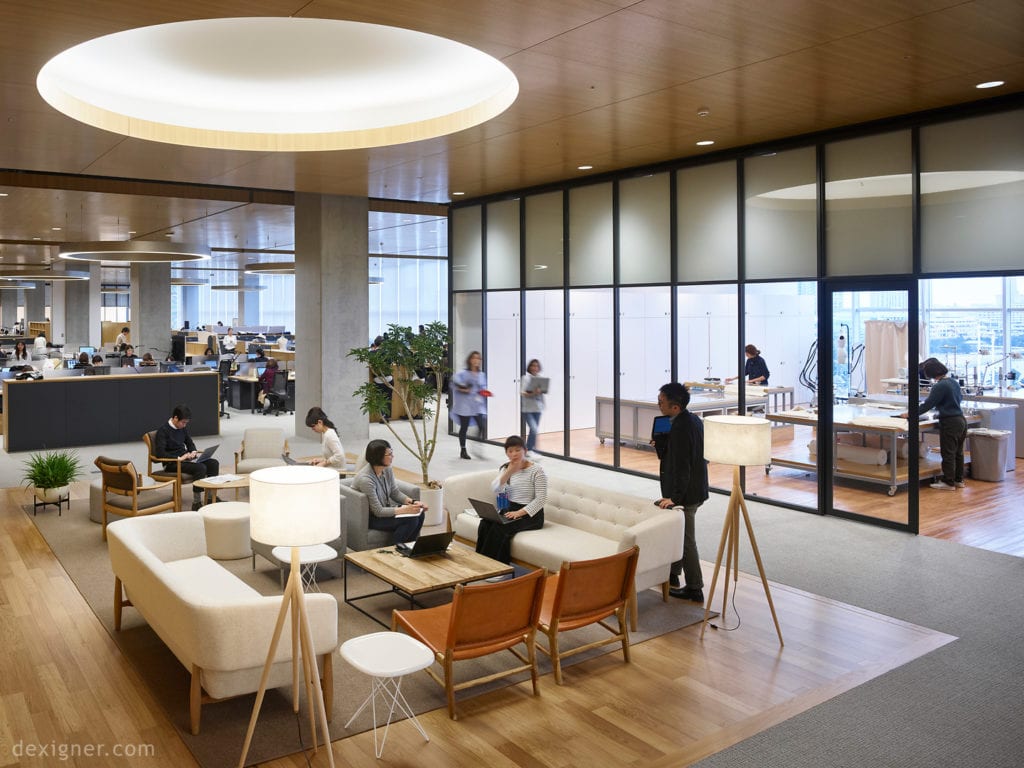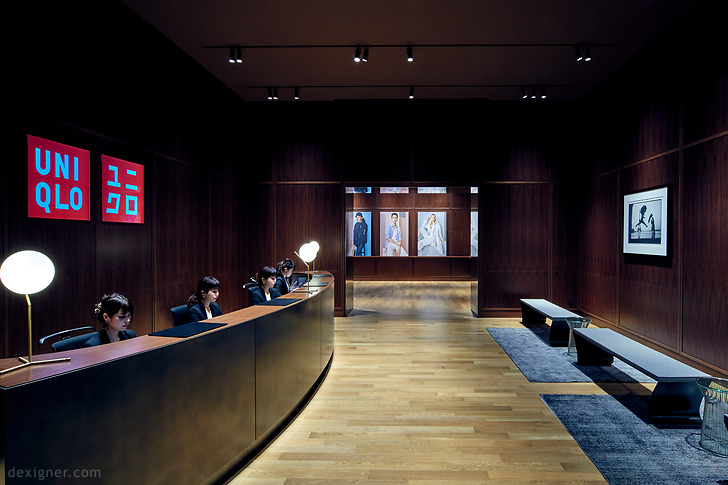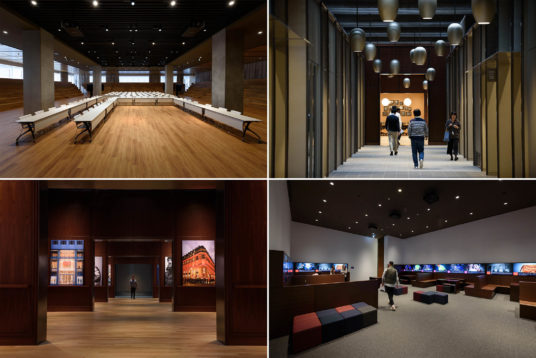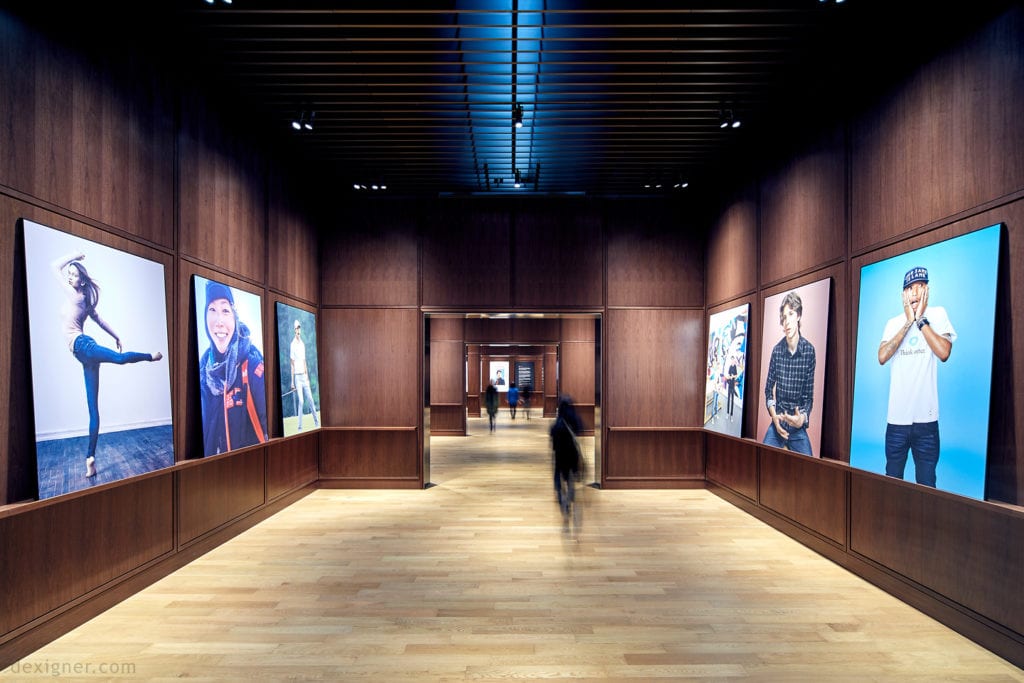5 Top Tech Solutions For Hybrid Companies
With over 50% of US workers working remotely at least once a week and tech solutions catching up quickly to meet the new challenges faced by modern businesses, hybrid workplaces... Read More

6 ways to save $$$ on your office space.
Learn more >June 2, 2017 | by
Reviewed by real estate expert Jonathan Wasserstrum
You might imagine Uniqlo City, Fast Retailing’s new headquarters for 1,000 Tokyo-based employees, to be something like an open-plan office on steroids.
Well it’s much more than that.
An Allied Works Architecture (AWA) creation, Uniqlo City is a 200,000 SQFT space stretching over four acres on the top floor of a six-story building.
It justifies the “city” label with internal “streets” connecting a system of studios, lounges, galleries, libraries and cafes and other unique spaces.

If it resembles the kind of ambitious open-plan office you’d expect to find at a tech company, Uniqlo City is arguable more considered than those spaces.
It’s a workplace experiment, one worth studying in order to empower every company’s foundation.
Its people.
The benefit of great customer experiences or user experiences has infiltrated most industries by now.
The idea that employees are equally worth of an “experience” is a different story.
In America’s proud industrial tradition, we tend to think of employees as “resources,” lemons with a finite amount of juice.
Designing their daily environment for happiness is still a novel idea, even as report after report on the ROI of a happy workforce surfaces. Spaces like Uniqlo City will ultimately help prove (or disprove) whether this concept is worth the investment.
As an example, either through direct observation or through inference, AWS and Fast Retailing made a hefty wager on what makes employees unhappy: Sitting in front of their screens all day. But they still want employees under the same roof working and creating together.
The viable (for them) solution? Giving employees plenty of reason to get up from their desks without having to leave the premises.
In offering a range of other more exciting social and collaborative work spaces (like cafes, everyone’s favorite) than desks, Uniqlo City enables a superior employee experience without losing productivity. In fact, the bet their making is that it will increase productivity, that providing more exciting, creative workspace will produce more exciting, creative solutions.

You don’t have to operate 200,000 or even 20,000 square feet of space to take employee experience to heart. For some, that increasingly means closing the gap between the comforts of home and the rigors of work. For some, that might simply mean free lunch of Fridays. Or the flexibility to frequent the office less.
Whatever the case, designing an employee experience can start in much the same way designing a user experience does:
Observing your subjects to understand how they produce their best work.

Sometimes where you position space matters more than the space itself.
In more generic open-plan offices, you might find the meeting rooms and collaborative spaces are at the periphery of the bullpens.
In designing Uniqlo City, AWA founding principal Brad Cloepfil cited “exchange and community” as the guiding spirit behind Uniqlo City’s system of streets.
This principle is of course not far removed from the ideals open-plan offices were supposed to unlock in the modern workforce: greater creativity, interaction and the combination of the two, “collaboration.”

Unfortunately, if the space employees inhabit feel rigid (even an “open” plan can feel restrictive if it mainly consists of bullpens and meeting rooms on the periphery), so will their interactions.
Uniqlo City solves for this challenge by creating physical intersections where different types of space—and groups of people—can collide more spontaneously.
In juxtaposing work studios, galleries and meeting space along the same “street,” Uniqlo City creates the sense that the next great idea or expedient solution is literally around the corner, the possibilities endless.
Here again you don’t need tens of thousands of square feet to plot out a similar strategy for encouraging spontaneous interaction.
Rather than a stretch of corridor with just meeting rooms, how about a stretch of corridor with a work studio, a lounge and meeting space?
Even something as simple as a glass partition can take a relatively small area of floor space and transform it into flex meeting space or a semi-private work studio.
Uniqlo City includes retail showrooms and large scale prints of in-store photography, functioning not only as relaxing gallery space but as daily inspiration. It reminds employees why they come to work every day; to invent great retail experiences for their customers.
No matter the size of your space, you can integrate living reminders of your brand and mission beyond your logo. From the art on the walls to the names of your meeting rooms, where a generic selection do just fine, make a brand selection.
SquareFoot is a new kind of commercial real estate company. Our easy-to-use technology and responsive team of real estate professionals delivers the most transparent, flexible experience in the market. Get in touch to start your search today.